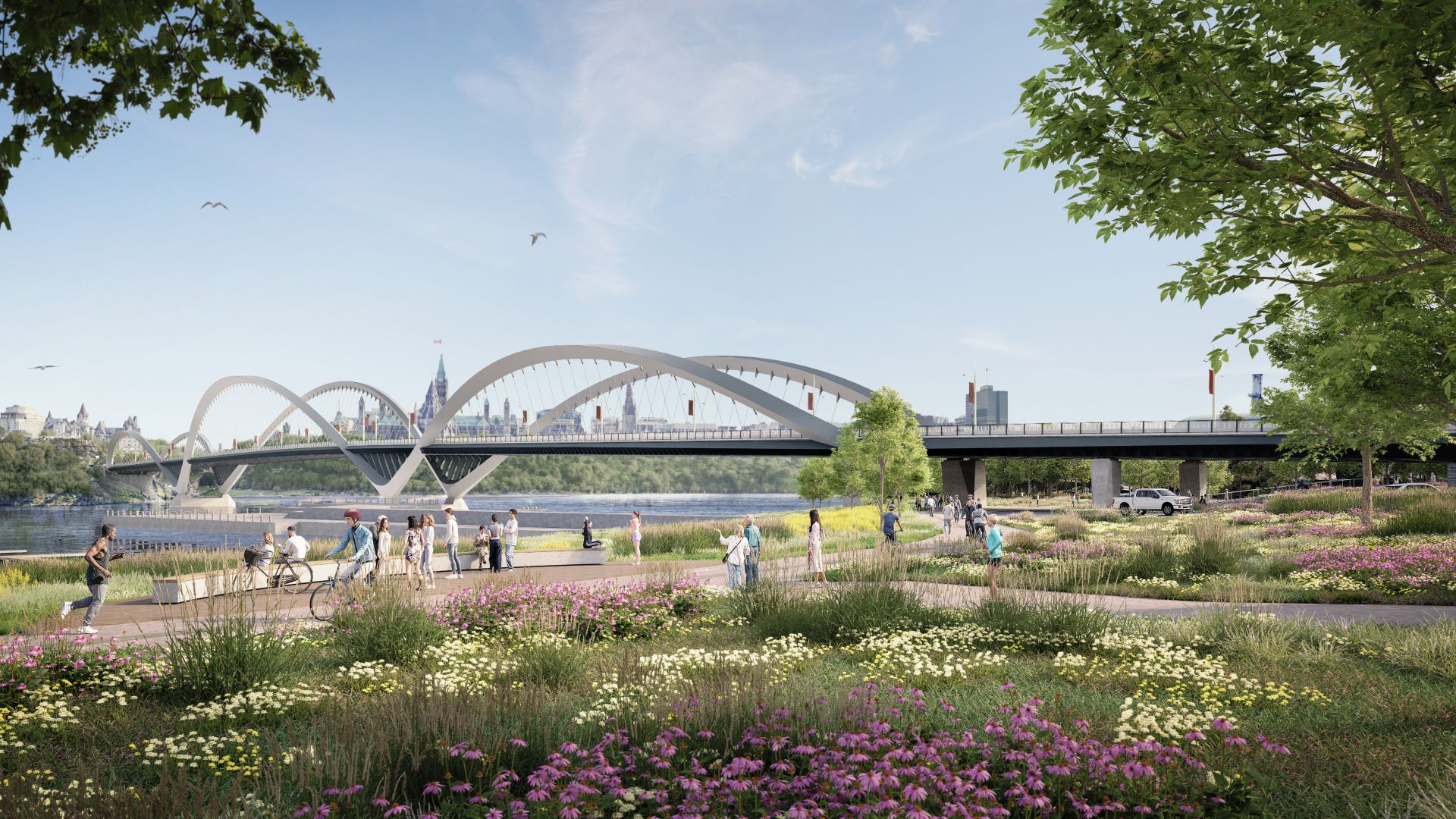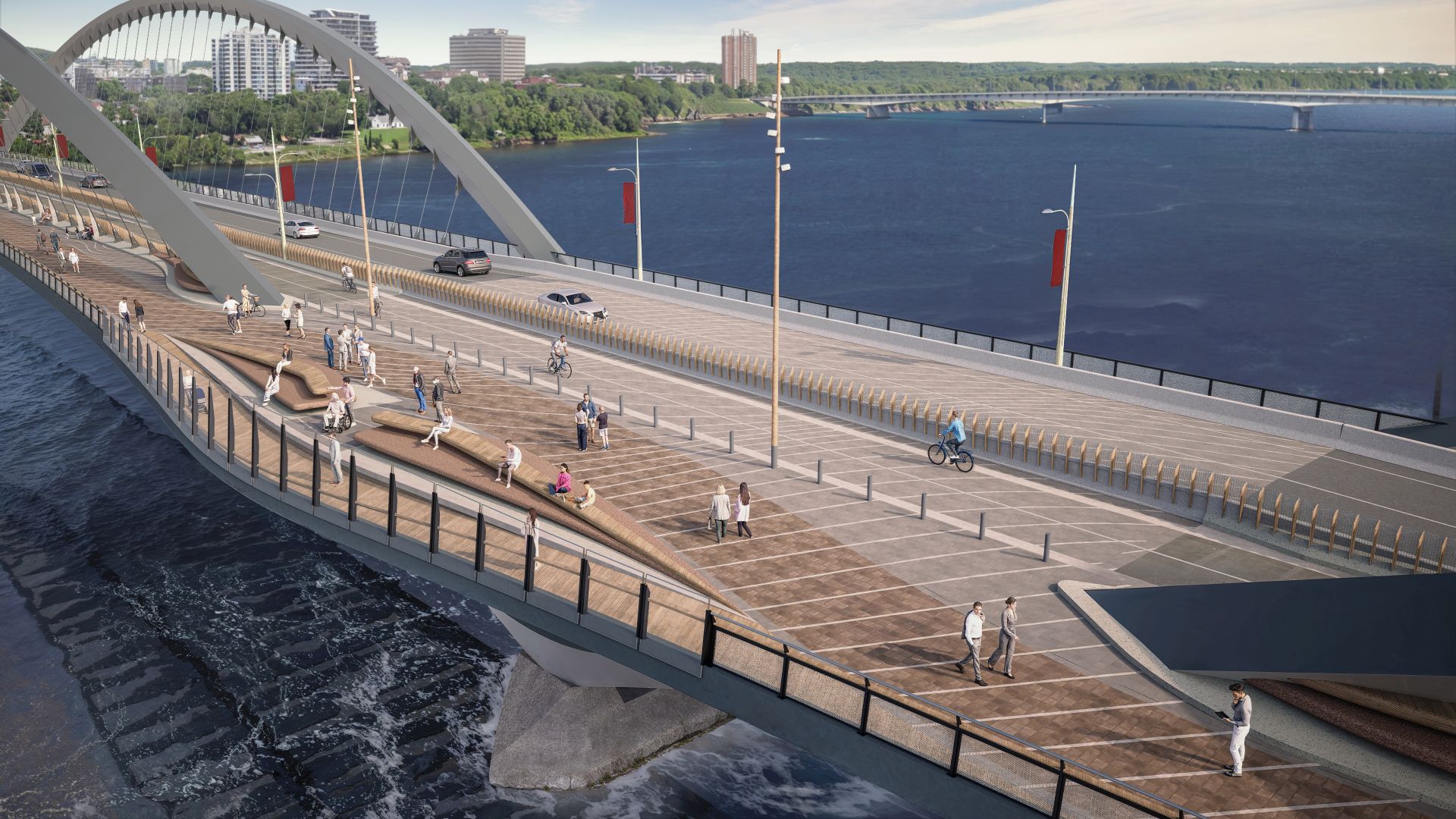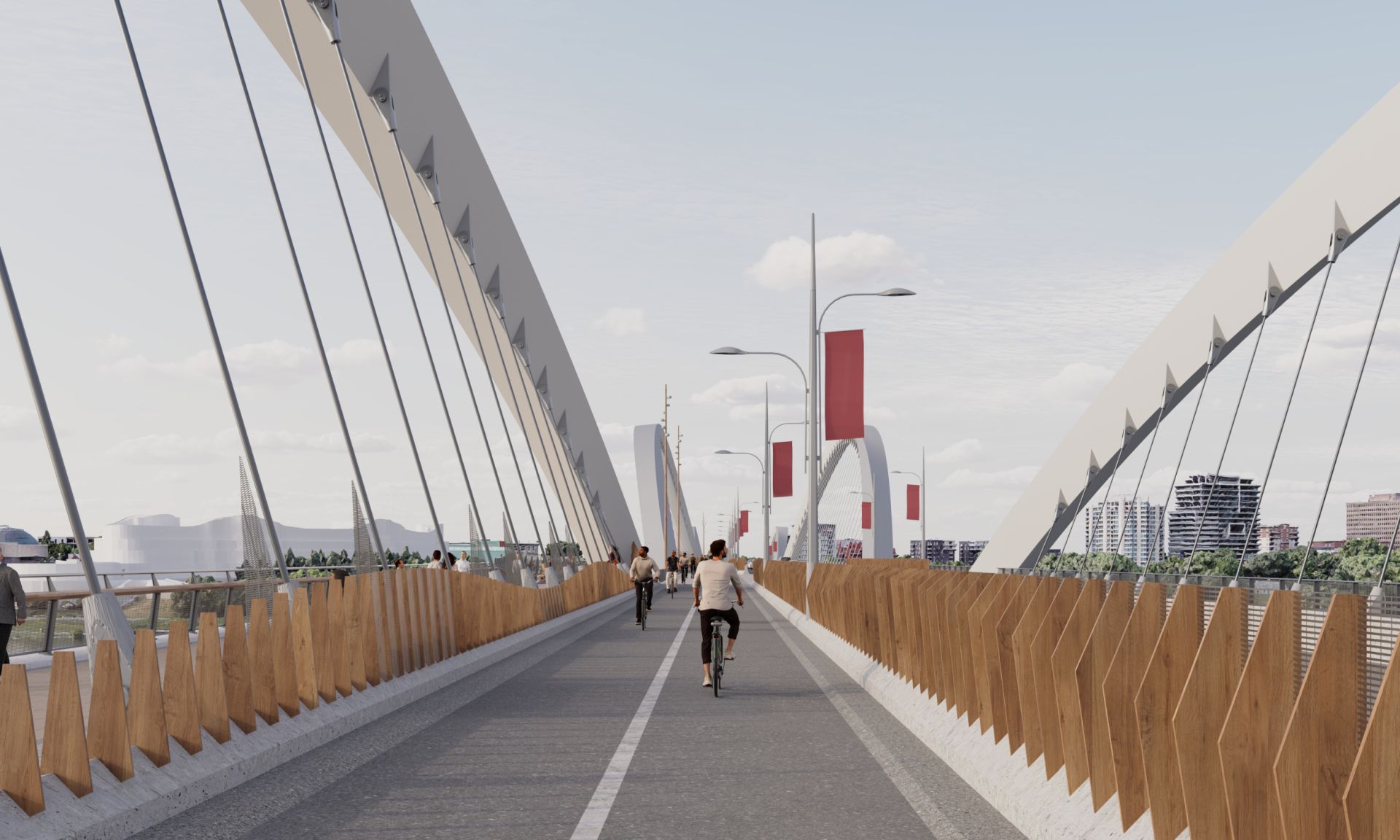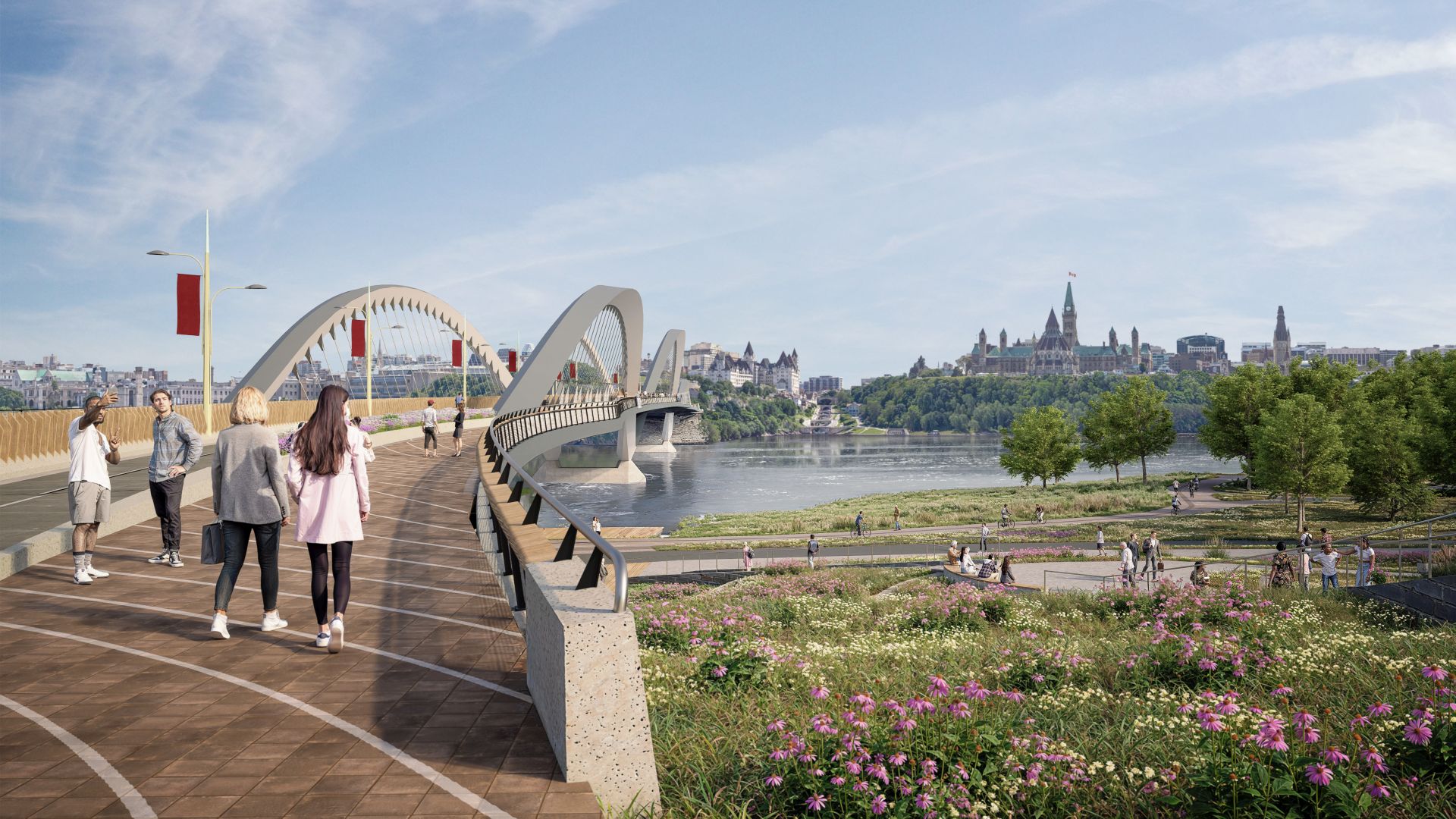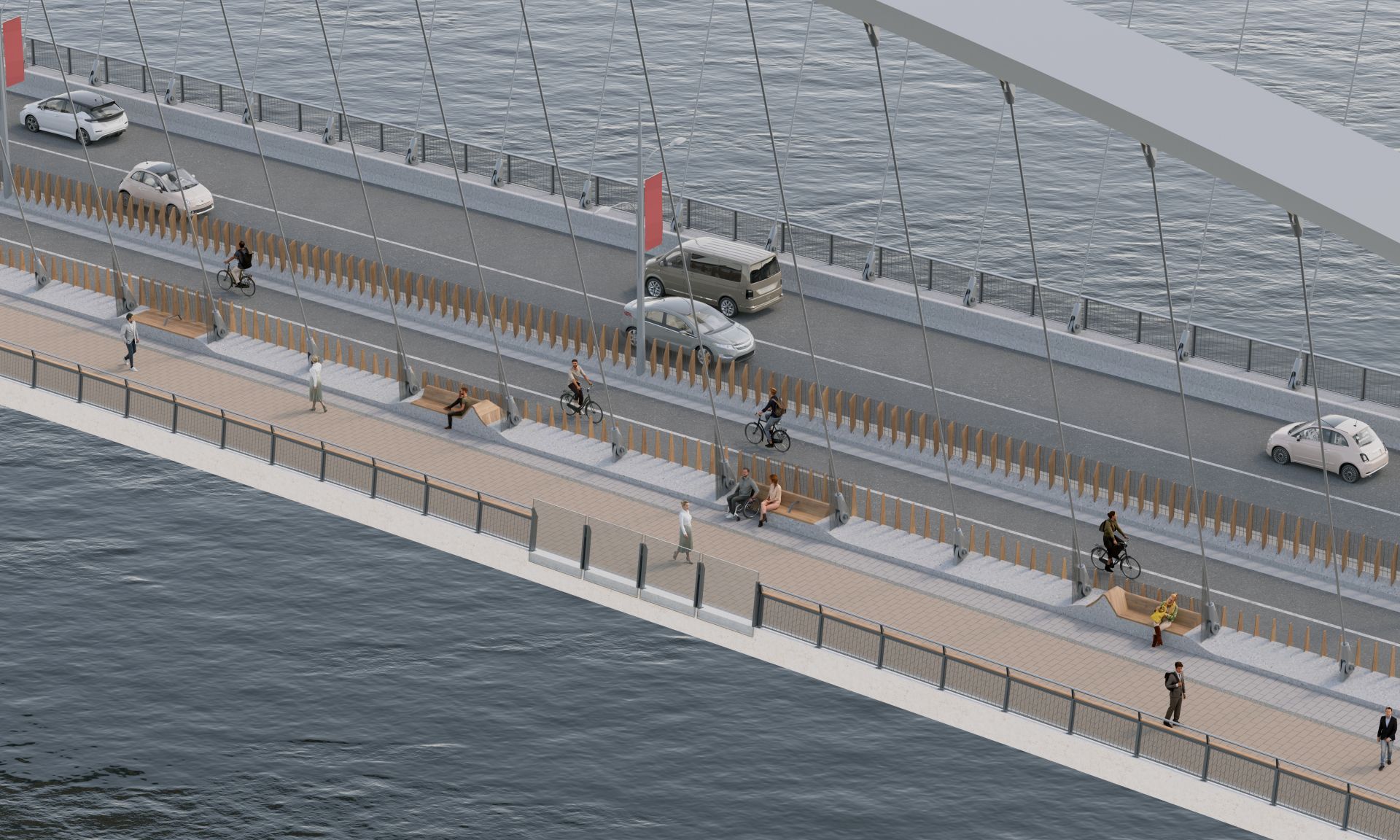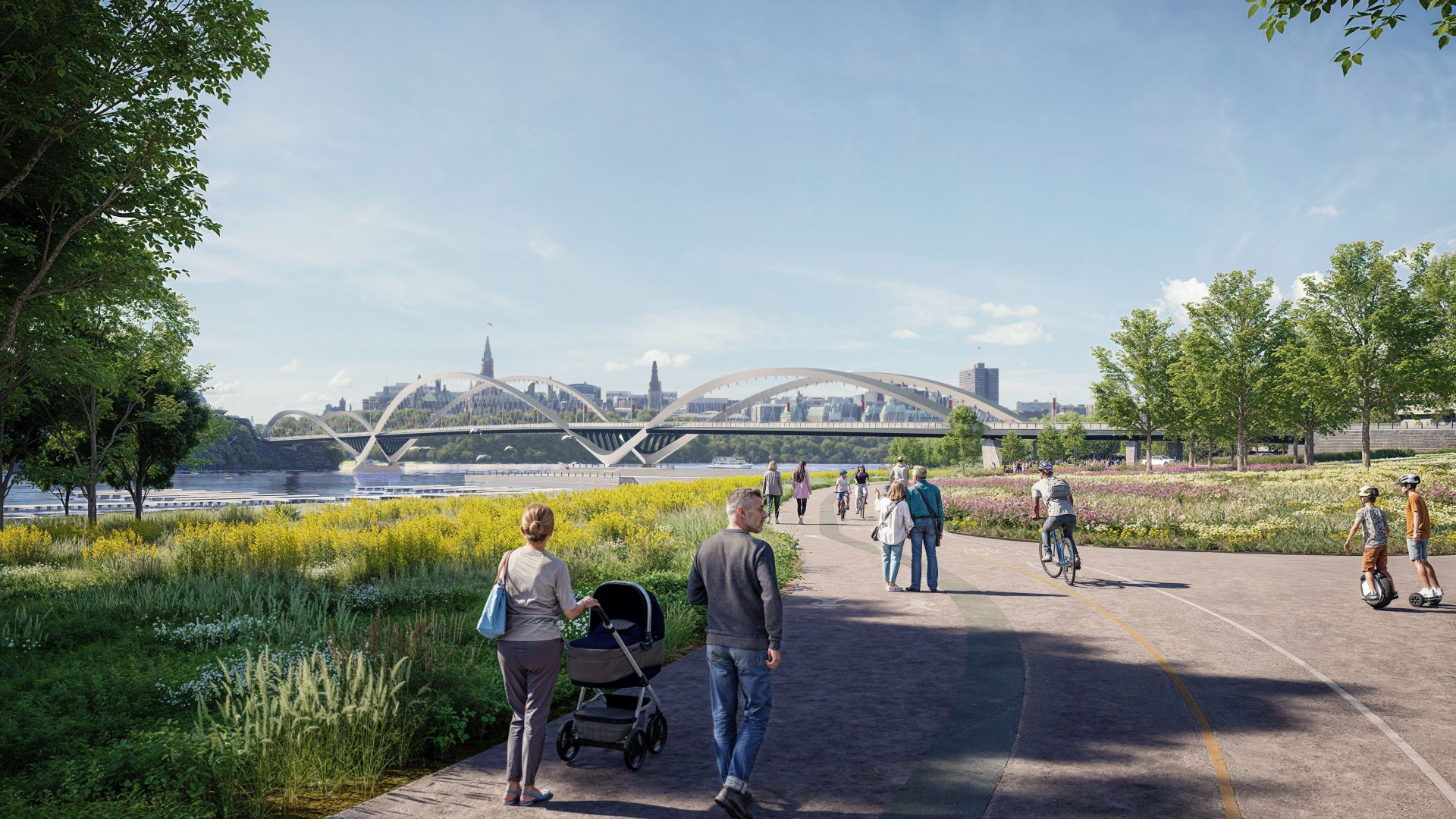Alexandra Bridge: Replacement project
The Alexandra Bridge is a vital link within the National Capital Region. The bridge is part of the Confederation Boulevard and plays a key role in the region’s transportation network. It’s used by pedestrians, cyclists and motorists. Learn about our project to replace this important bridge.
On this page
- Project overview
- Project description
- Explore the new bridge design
- Project timelines
- Public and stakeholder engagement
- Benefits of the new bridge
- Related links
Project overview
- Location
- Gatineau, Quebec, and Ottawa, Ontario
- Type of project
- Replacement
- Lead department
- Public Services and Procurement Canada
- Project status
- Procurement, final design and construction
- Next steps
- Construction
Project description
The existing Alexandra Bridge is over 120 years old. The bridge has reached the end of its service life and will be replaced starting in 2028. Due to its deteriorating condition, the government mandated Public Services and Procurement Canada in 2019, to replace it.
The decision to replace the bridge was made after careful study. We commissioned many reports and studies on replacing the Alexandra Bridge, which helped us make evidence-based decisions and plans.
Find more information on the state of the Alexandra Bridge before its replacement.
Explore the new bridge design
The new bridge design pays careful attention to the history and unique setting of the existing Alexandra Bridge.
In January 2025, the project reached a new milestone when the National Capital Commission (NCC) Board of Directors granted an initial Federal Land Use and Design Approval for the preferred concept. Called Motion, the design is inspired by nature and pays homage to the dynamic and ever-changing movement of the river. Its 3 undulating arches reference the:
- river’s moving water
- contours of the shoreline and escarpment
- curved façade of the Canadian Museum of History
Its design complements the surrounding sites and natural landscape, which:
- achieves a balance between transparency and mass
- frames national symbols
- offers an engaging sequence of views both upstream and downstream
The new bridge is expected to include:
- accessible viewing platforms that establish a strong visual connection between the bridge and the river
- flatter gradients and shorter distances from the ends of the bridge to the gathering areas, which supports universal accessibility
- a wider surface than the current bridge, with a clear separation of pedestrians, cyclists and motorists
- 2 lanes for vehicular traffic that could accommodate high-capacity transit in the future
- a by-directional cycleway
- seating to provide safe rest points and locations to enjoy the view
We’re collaborating with heritage specialists and other stakeholders to preserve and commemorate the legacy of the bridge.
We’re also engaging with Indigenous communities about heritage, sustainability and potential impacts on the river and landscape.
Images gallery
The following are concept images of the new bridge. The design will continue to be refined so it takes into consideration feedback from:
- public consultations
- Indigenous communities
- advisory committees
Project timelines
The replacement of the Alexandra Bridge is a complex and large-scale project. Replacement work is estimated to begin in 2028, and we expect the new bridge to open in 2032.
The project is taking place in 3 stages. We’re currently in the last stage of the project before its construction.
Stage 1: Pre-planning (2019 to 2021)
During the pre-planning stage, we:
- shared project information and consulted on various aspects of the project, including
- public consultation 1a (PDF)
- public consultation 1b (PDF)
- expected benefits and how to mitigate potential impacts
- developed the Planning and design principles (PDF)
- evaluated potential impacts to the public and stakeholders
- assessed possible mitigation measures
Stage 2: Planning and design (2022 to 2025)
In this stage, we completed the following key activities:
- developed the
- detailed project description for the Alexandra Bridge replacement project
- performance criteria for the bridge design (PDF)
- design concepts
- tool to assess if the concepts meet the requirements of the performance criteria for the bridge design (PDF)
- submitted the detailed project description to the Impact Assessment Agency of Canada
- awarded a contract to Arup Canada Inc. for the professional services of a technical advisor to assist with developing design options and advancing environmental, ecological and heritage studies
- launched the Public Advisory Group
- assembled an Independent Review Panel, which examined the concepts and provided advice on the design concepts
- consulted with the public, stakeholders and partners, including Indigenous communities
- completed the Heritage Impact Assessment, as well as economic, environmental and other studies, to inform the design development
- assessed concepts against the assessment tool and kept a shortlist of 3 concepts
- assessed the 3 design concepts and identified the preferred design concept
- launched the progressive design-build procurement process through a request for qualifications. As of October 3, 2025, the following 3 proponents (in alphabetical order) are participating in the request for proposals process:
- Alexandra Legacy Partners:
- Acciona Infrastructure Canada Inc.
- Aecon Infrastructure Management Inc.
- Parsons Inc.
- Pomerleau Major Projects Inc.
- T.Y. Lin International Canada Inc.
- Capital Crossing Constructors:
- AECOM Canada ULC
- Samsung C&T Corporation
- Webuild S.p.A.
- Epoch Pathway Ontario-Québec Partners:
- Carlos Fernandez Casado S.L.
- Construction Demathieu Bard Inc.
- EBC Inc.
- Flatiron Dragados Canada Inc.
- Hatch Ltd.
- Alexandra Legacy Partners:
Stage 3: Procurement, final design and construction (2025 to 2032)
The project is now in the procurement, final design and construction stage. In this stage, we’ll:
- use the outcomes of the Heritage Impact Assessment, as well as economic, environmental and other studies, to inform the design development
- ensure the design meets the commitments made in the detailed project description
- continue to consult with the public, Indigenous communities and stakeholders
- update the design
- advance the progressive design-build procurement process and award the contracts
- finalize the design
- seek approval of the final design from the NCC Board of Directors, in accordance with the National Capital Act, as part of its regulatory federal approval authority
- remove the existing bridge and build the new bridge
We’ll continue to assess and consider potential impacts of the project as the new bridge is designed and built. We will also evaluate impacts as the existing bridge is removed.
Public and stakeholder engagement
Public consultations are an important part of the project. We continue to consult with the public, Indigenous communities, partners and stakeholders throughout the process. This will help ensure the new bridge reflects Canadian values and identity in the spirit of reconciliation.
The NCC is leading public consultations for the project. The results of the following help inform the team on various aspects of the project:
- public consultations activities
- the Public Advisory Group
- many studies and reports
For information about the public consultations, visit the NCC's page about the Alexandra Bridge replacement project.
In addition to public consultations and engagement activities, the integrated project team continues to consult independent experts and advisors. These include the Advisory Committee on Planning, Design and Realty and the Advisory Committee on Universal Accessibility. Both committees provide feedback at key milestones to ensure the new bridge design will meet the highest possible standards and design criteria (PDF).
Benefits of the new bridge
The new bridge will be designed in a way to avoid corrosion-prone details for longer durability. This will help maintain the bridge in good condition for a longer period and allow it to serve many generations.
The new bridge will provide long-lasting benefits to the communities on both sides of the Ottawa River. The entire region will benefit from a safer, more reliable and more sustainable interprovincial bridge that will:
- improve vehicular traffic
- provide dedicated pedestrian and cyclist spaces
- commemorate the heritage of the existing Alexandra Bridge
- provide a safe and accessible route for drivers, pedestrians and cyclists, as well as sightseers
- provide generous space with well-defined and separated lanes for vehicles and active transportation
Related links
- Alexandra Bridge: Boardwalk and articulation repair project
- Studies and reports: Alexandra Bridge replacement
- Government of Canada sets major milestones for replacement of Alexandra Bridge
- New milestone reached for the Alexandra Bridge replacement project
- Improving transportation and mobility in the National Capital Region
- Lane reductions and closures on interprovincial bridges in the National Capital Region
- Directory of Federal Real Property: Alexandra Bridge
- National Capital Commission: Alexandra Bridge replacement
